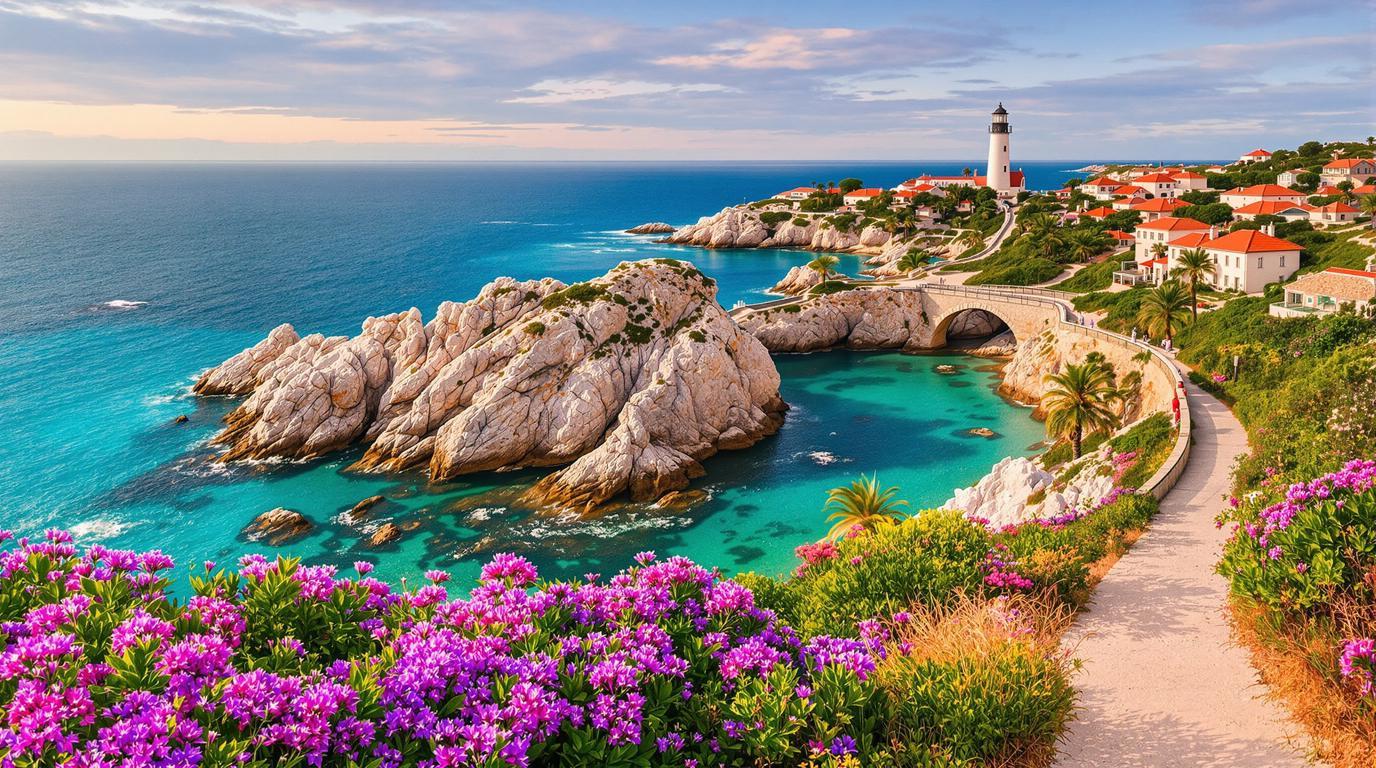Imagine a place where Caribbean-blue waters lap against pristine shores, yet you’re not in the tropics but surrounded by the vast Atlantic Ocean. This unlikely paradise exists on Île-de-Bréhat, a tiny French gem off Brittany’s coast that locals call “The Flower Island” due to its surprisingly exotic microclimate.
The Atlantic’s tropical mirage
Just off France’s rugged northern coast lies an improbable sight: waters so vibrantly blue they appear transplanted from the Caribbean. Despite being firmly in the temperamental Atlantic, Île-de-Bréhat boasts azure waters that rival tropical destinations thanks to its unique geography and the warming effects of the Gulf Stream.
“Our island exists in its own climate bubble. While mainland Brittany might be shrouded in mist, we often bask in sunshine with waters that shift between emerald and sapphire depending on the light,” explains Marie Dumont, a third-generation islander.
A Mediterranean microclimate in northern France
What makes this Atlantic anomaly possible is Bréhat’s unique microclimate. The Gulf Stream creates temperatures mild enough for palm trees, eucalyptus, fig trees, and vibrant hydrangeas to thrive despite the northern latitude. This unexpected botanical display has earned it the nickname “The Flower Island” among enchanted visitors.
Pink granite and turquoise waters: a photographer’s dream
The island’s distinctive rose-colored granite formations create a stunning contrast against the azure waters. At low tide, these pink rocks form natural swimming pools filled with crystal-clear Atlantic water, warmed by the sun. Photographers flock to capture the surreal color palette that seems imported from a more tropical latitude.
Car-free paradise with hidden coves
Unlike many island paradises that have become overrun with tourism, Bréhat remains refreshingly authentic. Cars are banned, with visitors exploring by foot or bicycle along narrow paths that wind between stone cottages and wildflower meadows. The island’s circumference measures just 7 miles, making it possible to discover its entirety in a single, leisurely day.
Two islands connected by a natural bridge
Technically, Bréhat consists of two islands joined by a 19th-century bridge known as Pont ar Prat. The smaller, northern island remains wilder and less developed, offering secluded beaches with waters so clear you can watch fish darting through seagrass from above.
“The northern part is where you’ll find the real magic,” says Philippe Brunet, local lighthouse keeper. “Walk past the lighthouse to the hidden coves where the water turns a shade of blue that makes people doubt they’re still in Brittany.”
The perfect escape from France’s tourist crowds
While travelers flock to Paris or the French Riviera, Bréhat offers a peaceful alternative. Despite being just a 10-minute ferry ride from the mainland port of Paimpol, the island feels worlds away from the usual tourist circuit. Unlike France’s heavily visited medieval towns, Bréhat maintains its authentic character.
Seasonal transformation: knowing when to visit
The island changes dramatically with the seasons. Summer brings abundant flowers and warmer swimming conditions, while spring and fall offer peaceful solitude. Unlike destinations that enjoy perpetual sunshine, Bréhat’s weather can be unpredictable – but that’s part of its charm.
Seafood straight from the Atlantic
Bréhat’s restaurants serve seafood harvested from the surrounding waters. Try the legendary Breton oysters, pulled from beds visible at low tide, or sample fresh-caught sea bass prepared with simple but perfect French techniques. The modest harbor restaurants may look unassuming, but they serve some of France’s freshest marine cuisine.
Getting there: an adventure in itself
Reaching this Atlantic paradise requires some effort. From Paris, take a train to Saint-Brieuc, then a local connection to Paimpol, where ferries depart regularly for the 10-minute crossing. This journey creates a natural filter that keeps Bréhat from becoming overwhelmed by tourism.
As you depart, watching the island’s pink shores and improbably blue waters recede into the distance, you’ll likely find yourself questioning geography. How can such Caribbean colors exist in these northern waters? It’s a question that makes this tiny Atlantic gem one of France’s most captivating natural wonders.
